Instead of putting those small branches, leaves, and grass clippings in bags by the curbside…build a hugelkultur bed.
Simply mound logs, branches, leaves, grass clippings, straw, cardboard, petroleum-free newspaper, manure, compost, or whatever other biomass and organic matter you have available, top with soil, and plant your veggies or perennial plants.
What you’ll get in return is a natural, living garden mound culture that will provide your veggies, fruits, and herbs with a host of beneficial nutrients.
What’s Hugelkultur? Why Hugelkultur?
Hugelkultur (HOO-gul-culture). It’s a German word meaning hill culture or hill mound. The benefits of hugelkultur beds are many. Here are just a few advantages of this gardening technique:
The gradual decay of rotting wood is a consistent source of long-term nutrients for the plants. A large bed might give out a constant supply of nutrients for 20 years (or even longer if you use only hardwoods). The composting wood also generates heat which should extend the growing season.
Soil aeration increases as those branches and logs break down…meaning the bed will be no-till, long term.
The large logs, branches, and other woody material act like a sponge. Rainwater is stored and then released during drier times. Actually you may never need to water your hugel bed again after the first year (except during long term droughts).
Sequester carbon into the soil.
How To Make A Hugelkultur Bed
On a sod lawn, Sepp Holzer (hugelkultur expert) recommends cutting out the sod, digging a 1-foot deep trench, and filling the trench with logs and branches. Then, cover the logs with upside-down turf.
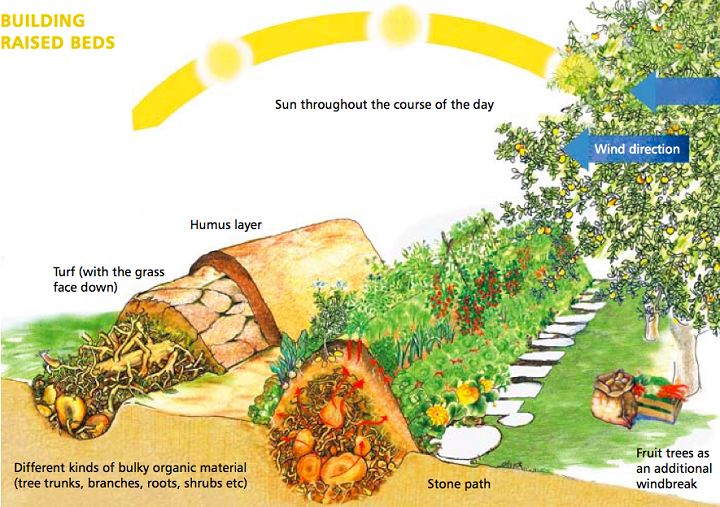
On top of the turf add grass clippings, seaweed, compost, aged manure, straw, green leaves, mulch, etc. From the Permaculture book by Sepp Holzer via Permaculture Magazine.

In the photo above, you’ll see a hugel and traditional bed comparison. Cantaloupe plants from the same seed packet. The hugelkultur bed on right was planted two weeks after the traditional bed on left. Photo courtesy of Marcella at Worts and All.

Here’s a steep hugel bed. The more wood and organic matter inside your hugelkultur, the less water it will need; possibly no supplemental water after establishment. With a larger size more heat will be generated and obviously, it will last longer. Photo courtesy of shtf Preparedness.
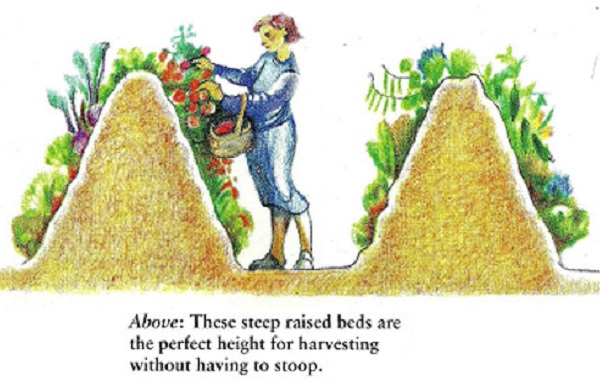
Sepp Holzer recommends steep hugelkultur beds to avoid compaction from increased pressure over time. Steep beds mean more surface area in your garden for plants and the height makes easy harvesting. The greater the mass, the greater the water retention benefits. Image from the Permaculture via Permaculture Magazine.

Height can be decreased by partially burying the bed. Final bed size 75′ long, 4′ wide trench, finished size 6′ at the base, separated by 2′ access paths. Wood height is 8-12″ on tilled clay, finished size 30″ high from bottom of the trench. Rob is making beds for potatoes and he feels they will last up to ten years. Interesting read & photos courtesy of One Straw Rob.
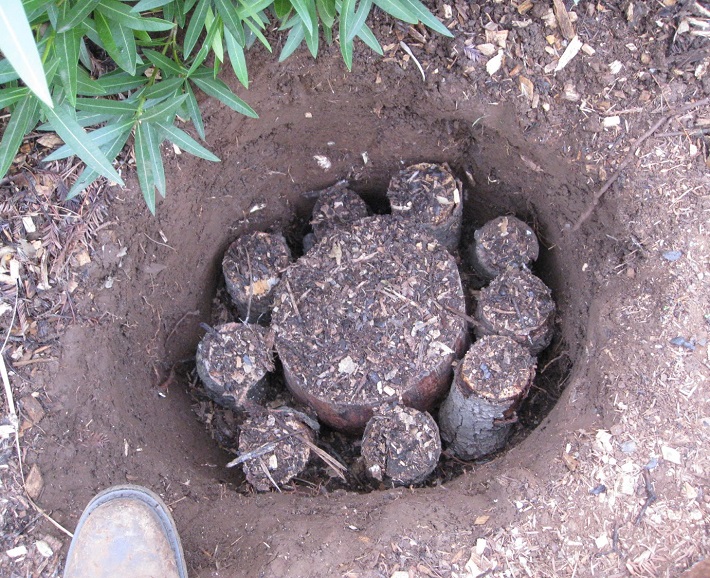
One-plant hugelkultur by Eric Markov. Start small! Whenever you plant add some wood logs and compost. One could also treat an old below ground level tree stump as a hugel, as the old stump will bring up water and decompose, adding nutrients to the soil. Image from Low Cost Vegetable Garden.
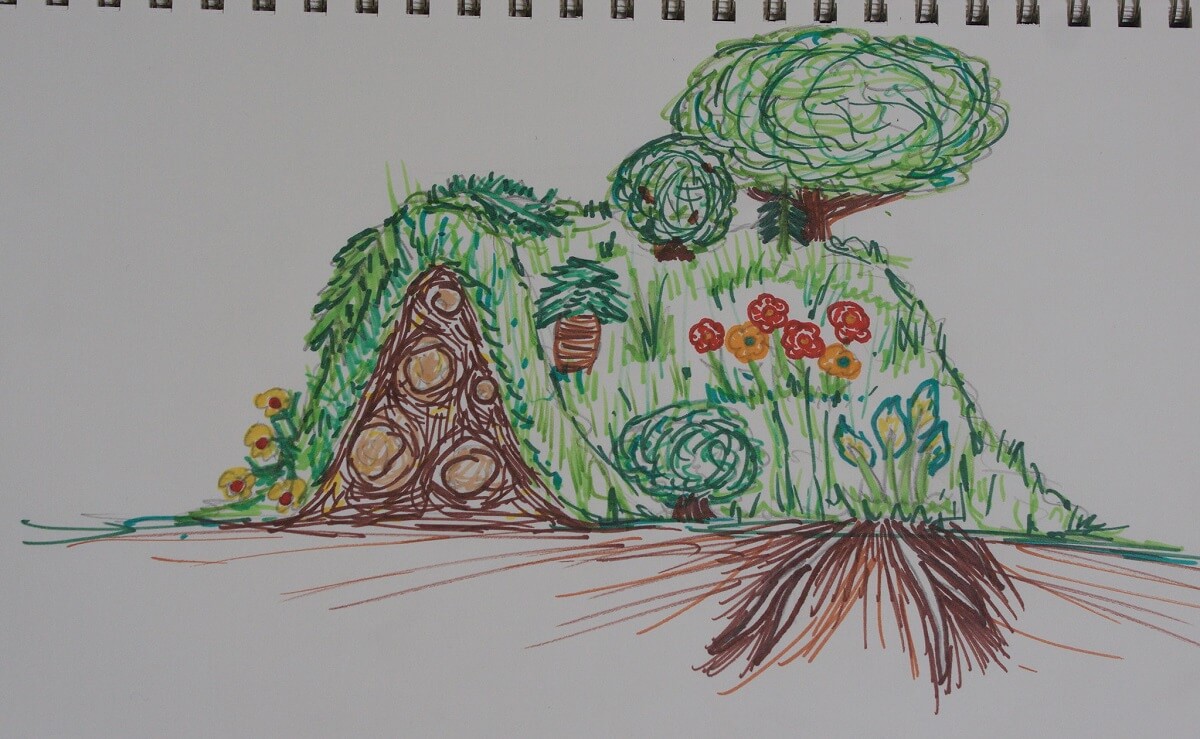
Here’s one permaculturist’s illustration of their thriving hugelkultur bed 3 years after the initial planting.
Ideas For Your Permaculture Garden Bed
- 6 Reasons Why I Chose Clover As A Living Mulch
- Worm Bin Essentials: Getting Started with Vermiculture
- The Basics of Straw Bale Gardening
- Mycelium Guide
14 Of The World’s Best Hugelkultur Beds
1) Hugelkultur In Ontario, Canada
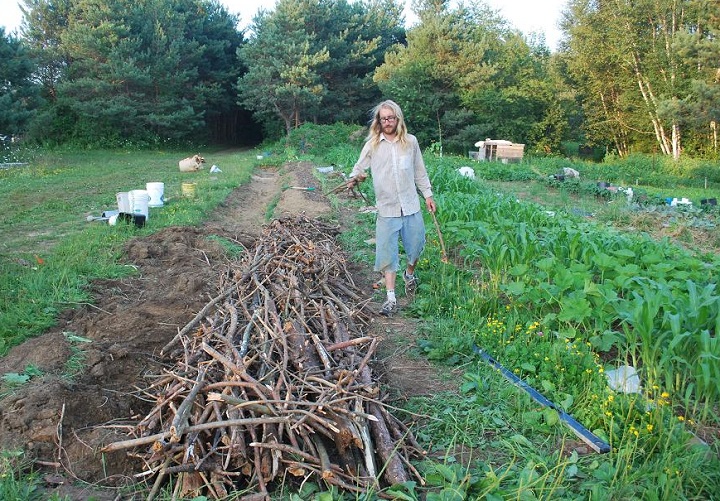
Hugel bed in Ontario, Canada. By Travis Philp. Wood branches stacked 1 foot high.

Hugelkultur bed in Ontario, Canada. As above. Branches covered with manure mixed with hay, 4-6″. Sod was packed into random holes.
If you visit greenshireecofarms.com, they also have a video tour of their forest hugelkultur garden.
2) Lettuce-Covered Hugelkultur

Hugelkultur beds covered in lettuce. More photos, and an explanation of how hugelkulturs work, can be found at Rich Soil.
3) Pallet Hugelkultur
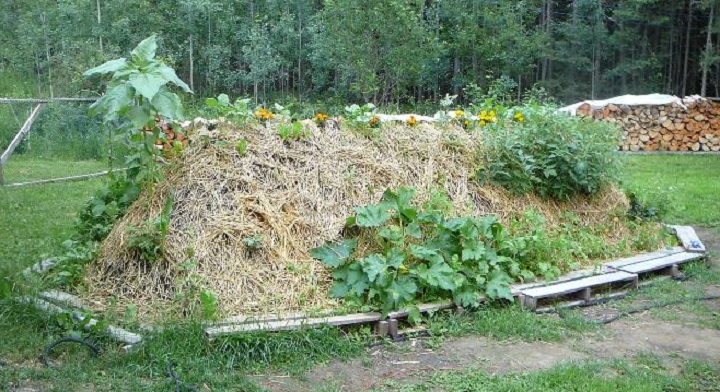
Hugelkultur – nice use of pallets around the periphery. By Mike Sved of northern Ontario. This photo was found on Permies.
4) Log Hugelkultur
Building a hugelkultur can be a great way to use debris from your homestead. These folks turned what was a large, dangerous tree on their property into a thriving hugelkultur bed.
5) Row Of Hugelkultur Beds
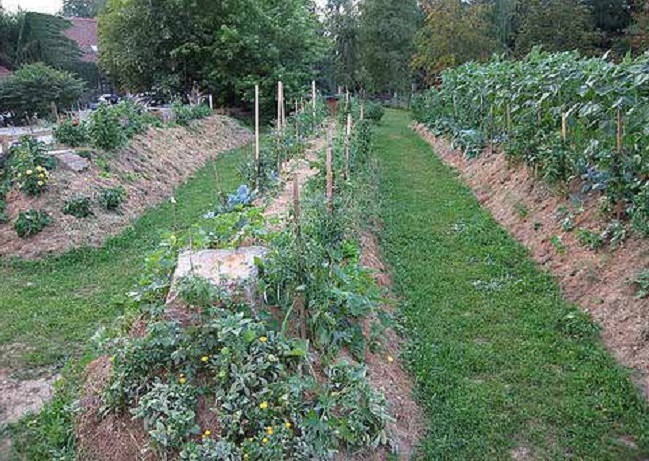
A Sepp Holzer Hugelkultur garden. This photo was found at Holzer Permaculture.
6) Water Directing Hugelkultur
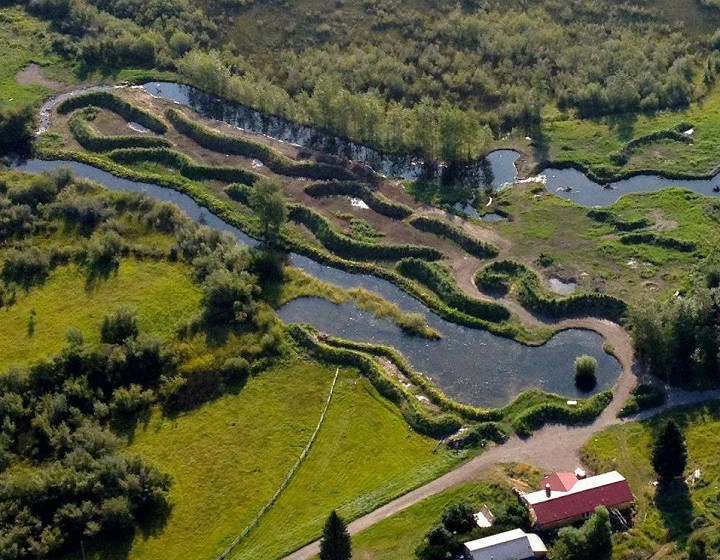
Sepp Holzer uses the terrain, ponds, swales and hugelkultur to direct water to where it is needed on this Montana farm. You can find more on how to work with nature at Holzer Permaculture.
7) Small Hugelkultur Garden
If you don’t have enough room to make a large hugelkultur, this small design is perfect.
8) Framed Hugelkultur Bed

Hugelkultur with frame. The complete garden can be seen at New Wave Gardening Experiment.
9) Dug-Out Hugelkultur
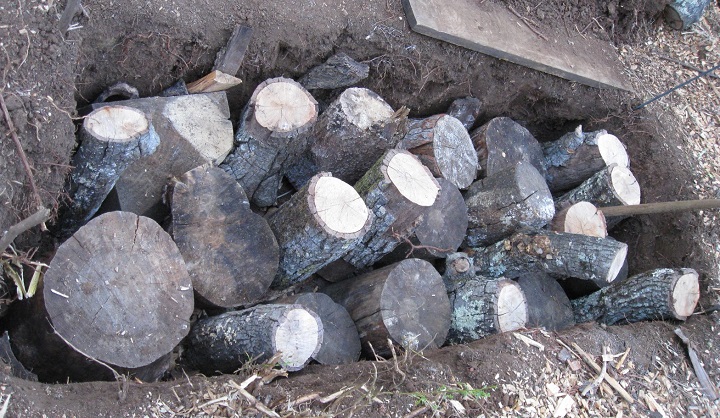
Hugel bed dug in clay with logs put in vertically, next branches and lots of wood chips. The top 6″ will be wood chips and dirt. This bed will store water and give nutrients for many years to come. Photos & more information can be found at Low Cost Vegetable Garden.
10) Branch-Lined Hugelkultur

Small scale hugel bed. As raised beds tend to be a bit drier than traditional beds, a hugelkultur bed is a good solution for a raised bed in a dry climate. This photo was found in an article about evaluating your soil at Homesteading Downsized.
11) Building a Hugelkultur

Hugelkultur beds in process by Caleb Larson in Montana. The drier your area, the more wood you need to hold moisture for subsequent years. More examples can be found at Permies.
12) Circular Hugelkultur Bed
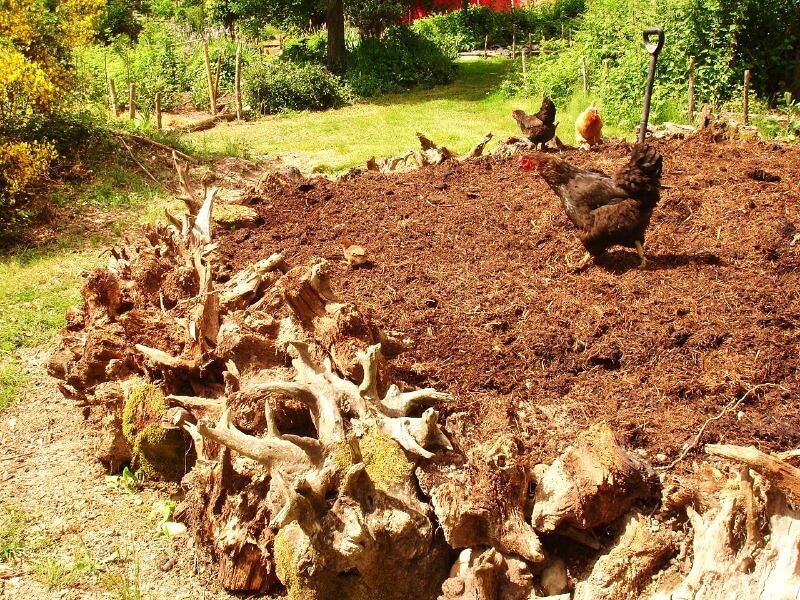
This rounded hugelkultur garden is great for being able to access the plants. This design also makes watering easier.
13) Hugelkultur Gardens From Idaho

Hugelkultur beds by Jon in Idaho. You can find out more on this hugelkultur at Permies.
14) Blooming Hugelkultur Bed

Hugelkultur Bed by WSU Master Recycler Composters in Lewis County, Washington. The stones are sure to keep extra heat in the bed. Image originally found at “lewiscountyrecycles.org/projects”
Straw Bale Hugelkultur
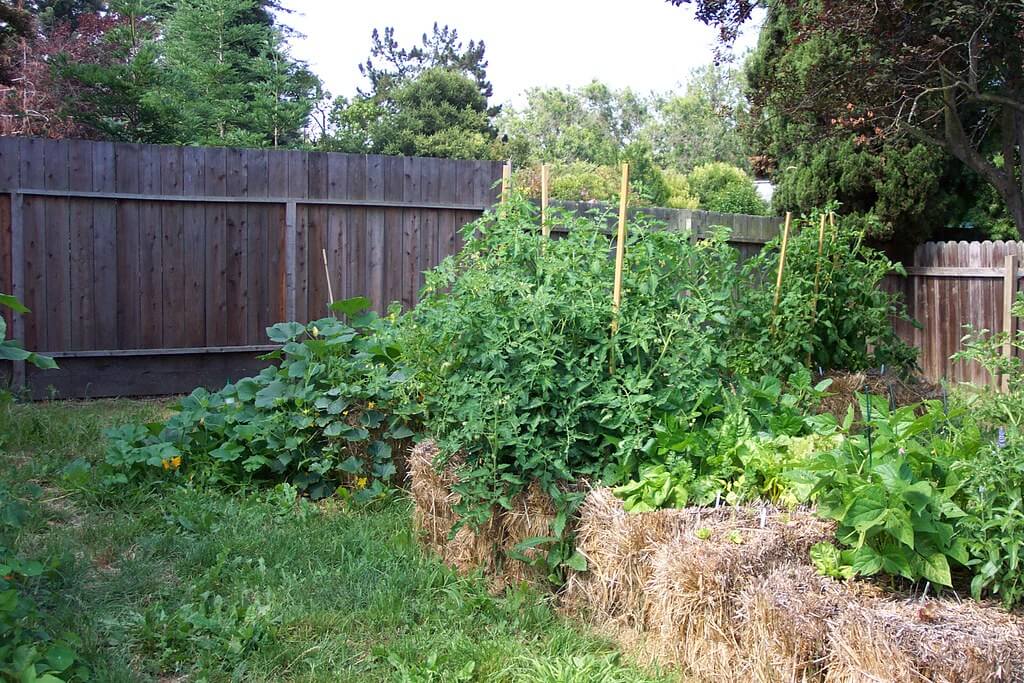
Strawbale gardens require less soil, less water and hold heat. As the straw breaks down nutrients feed the plants. Combining a straw surround with a hugel interior, topped by lasagna layering is an excellent idea for an area with poor quality soil.

A straw bale hugel bed by Jamie in Wisconsin. An instant nutrient-rich border for your hugelkultur. You can also do a hugelkultur right on top of the sod. If excess soil is not available sheet mulch or lasagna garden on top of the logs/branches. Photo originally found at “smalltowngardens.blogspot.com/2012/05/my-own-strawbale-hugelkultur-combo.html”.

Using hay instead of wood will give you a bed that supplies moisture and nutrients for about five years instead of the log’s ten to twenty, plus. By Gerald Benard. To see the entire discussion on hugelkulturs, check out Permies.

Hugel bed in Ontario, Canada (June 28) by Tim Burrows. Tim surrounded his very tall hugelkultur bed in pallets! Read more about it at Permies.
Sheet Mulching In Hugelkultur
Sheet mulching (lasagna gardening) is like composting in place. Above: just a suggestion as to sheet mulching layers. Nitrogen-rich material such as fresh grass clippings or green leaves put right on the hugelkultur wood would help jump-start the process in your compost pile. Could also include seaweed, straw, dead leaves, leaf mold, etc…
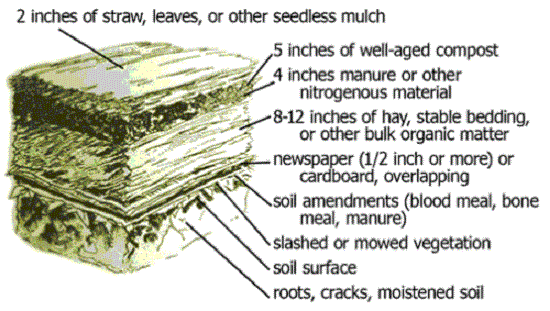
The first year of break down means the wood (and fungi) steal a lot of the nitrogen out of the surrounding environment, so adding nitrogen during the first year or planting crops that add nitrogen to the soil (like legumes) or planting species with minimal nitrogen requirements is necessary, unless there is plenty of organic material on top of the wood.
After the wood absorbs nitrogen to its fill, the wood will start to break down and start to give nitrogen back in the process. In the end, you will be left with a beautiful bed of nutrient-rich soil and improved soil fertility.
Trees That Work Well In Hugelkultur
Hard woods break down slowly and therefore your hugel bed will last longer, hold water for more years and add nutrients for more years. But soft woods are acceptable as well, a softwood bed will just disintegrate quicker.
Mixing woods with softwoods and branches on top, to give off nutrients first, and hardwoods on bottom sounds like a plan if you have access to multiple types of wood. Yet the newly decomposing softwoods at the top will eat up a lot of nitrogen at first, so compensate for that.
Tree Varieties That Work Best
- Alders
- Apple
- Aspen
- Birch
- Cottonwood
- Maple
- Oak
- Poplar
- Willow (make sure it is dead)
Tree Varieties That Work Okay
- Black cherry (use only rotted)
- Camphor wood (well-aged)
- Cedar/Juniper/Yew (anti-microbial/anti-fungal, so use only at the very bottom or unless already well-aged. Cedar should be broken down before new plant roots reach it)
- Eucalyptus (slightly anti-microbial)
- Osage orange (exceptionally resistant to decay)
- Pacific Yew (exceptionally resistant to decay)
- Pine/Fir/Spruce (tannins and sap)
- Red Mulberry (exceptionally resistant to decay)
Tree Varieties To Avoid
- Black Locust (will not decompose)
- Black Walnut (juglone toxin)
- Old Growth Redwood (heartwood will not decompose and redwood compost can prevent seed germination)
The Best Hugelkultur Resources Online
- The Art and Science of Making a Hugelkultur Bed – Transforming Woody Debris
- Hugelkultur: Composting Whole Trees With Ease


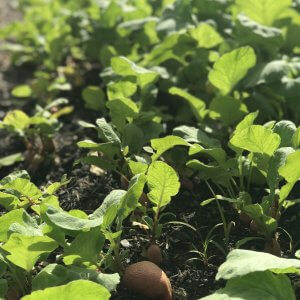
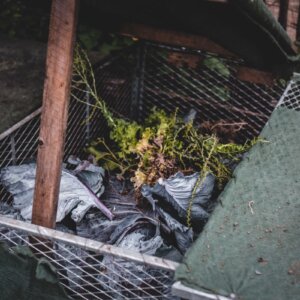
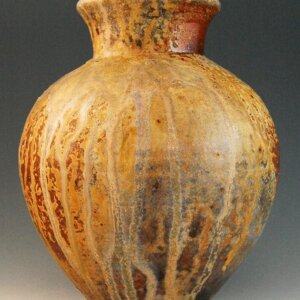
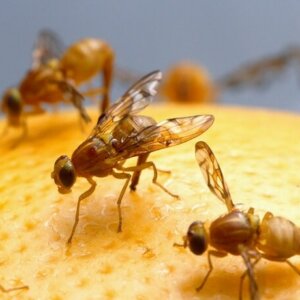


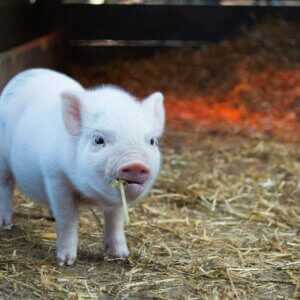

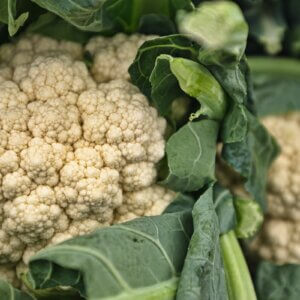

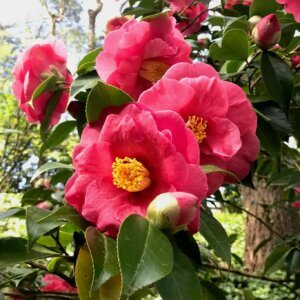
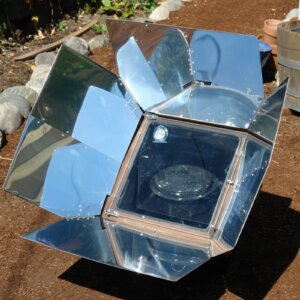



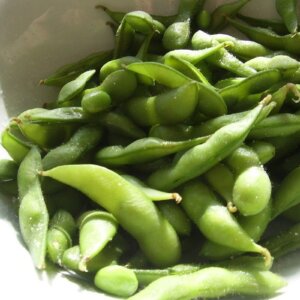


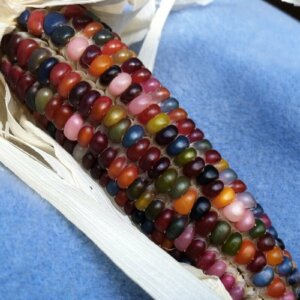
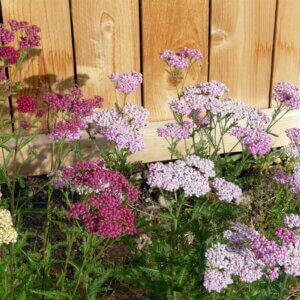

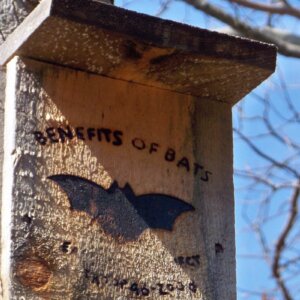


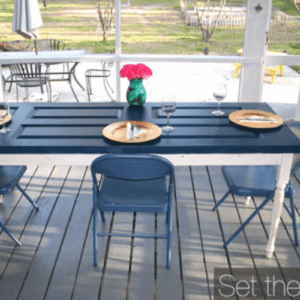
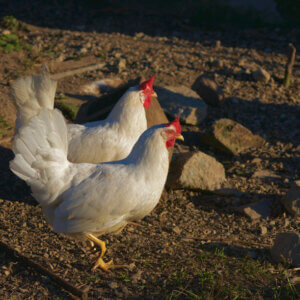
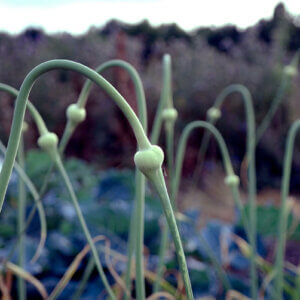

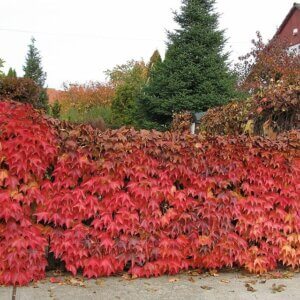




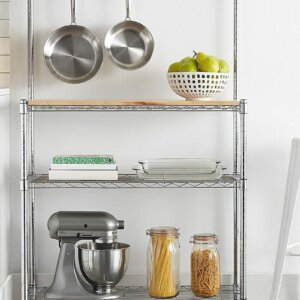
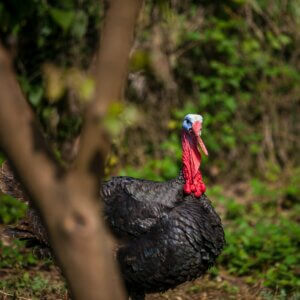
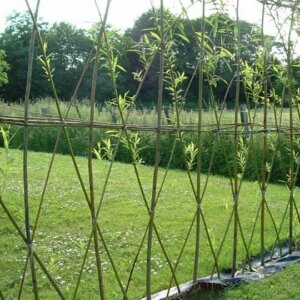




Leave a Reply